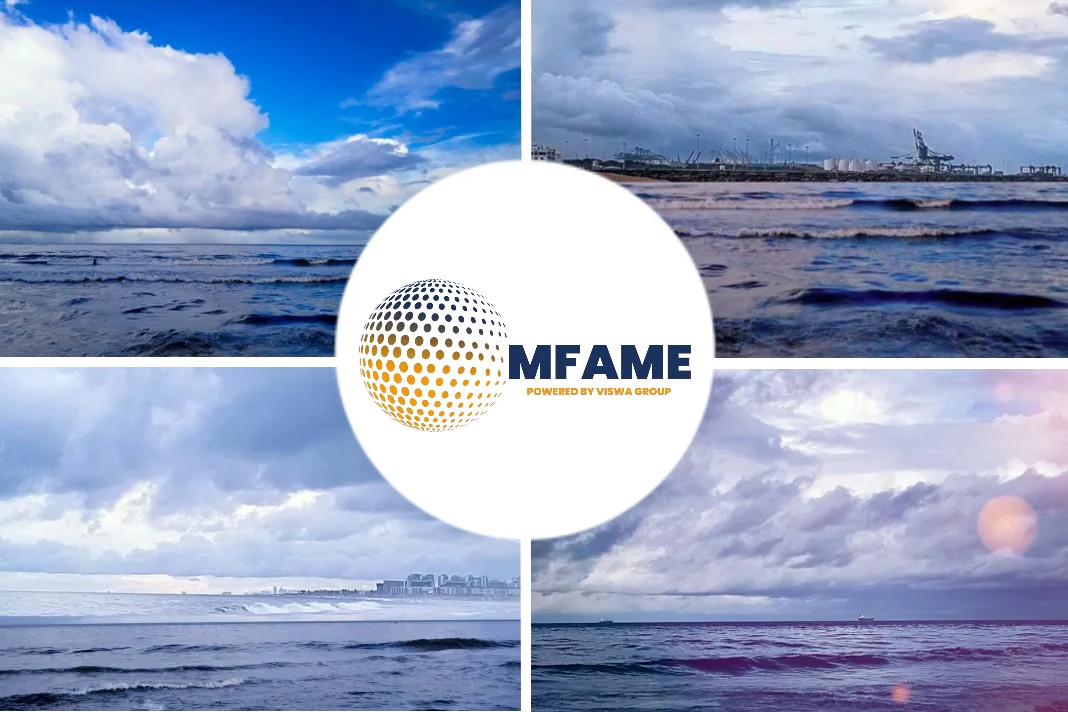Nippon Yusen Kabushiki Kaisha (NYK), MTI Co., Ltd. (MTI), and Elomatic Oy (Elomatic) have completed the concept design phase of a new capesize bulk carrier and a very large crude oil tanker (VLCC) in a project that aims to build an LNG-fueled vessel that can be efficiently converted to an ammonia-fueled vessel, or ARLFV, an ammonia-fuel ready LNG-fueled vessel.
Capesize bulk carrier
The three companies are positioning ARLFVs as a next-bridge solution for the realization of future zero-emission vessels. In the future, the three companies will proceed with the actual design of an ARLFV with shipyards and marine equipment manufacturers.
A “concept design” includes ship specifications such as overall length and width, load capacity, voyage distance, ship speed, etc, for a vessel building.
NYK has set a long-term target of net-zero emissions of greenhouse gas (GHG) by 2050 for the NYK Group’s oceangoing businesses, and aims at launching zero-emission ships that run on low-environmental-load marine fuels, such as ammonia or hydrogen, in the future. NYK is positioning LNG, a low-carbon marine fuel, as a bridge-solution until future zero-emission ships are realized, and has thus been expanding its fleet of LNG-fueled vessels.
In September 2021, NYK, MTI, and Elomatic launched a project to develop an ARLFV as a “next bridge solution” with the aim of developing zero-emission vessels in the future. In the past, it was generally shipbuilders that implemented concept designs, but in this project, NYK, MTI, and Elomatic have been jointly crafting the concept design of the ARLFV. In March 2022, the concept designs of a pure car carrier and a post-panamax bulk carrier were completed in Phase 1 of the project.
- Announcement on 3 March 2022, “Concept Design for Ammonia-Fuel Ready LNG-Fueled Vessel Completed”
Now, the three companies have completed the concept designs of a capesize bulk carrier and a very large crude oil tanker (VLCC) in Phase 1.5 of the project.
The main challenges in designing and developing ARLFVs are as follows:
- 1.Because of the lower energy density of ammonia compared to LNG, a larger fuel tank capacity is needed in order to maintain the same level of endurance.
- 2.Because of (1), the space for cargo loading, as well as the loadable cargo weight, is reduced.
- 3.A bigger fuel tank and additional fuel tanks affect ship stability and hull strength.
- 4.Due to the extreme toxicity of ammonia, ventilation for the ammonia tanks must be designed according to international conventions and/or domestic laws.
- 5.Conversion from an LNG-fueled vessel to an ammonia-fueled vessel requires additional work periods and costs.
In the Phase 1.5 concept design, NYK, MTI, and Elomatic sought solutions to solve the above issues, and researched and studied the fuel-tank layout and other specifications of the ship. The three companies then completed a concept design that has viable, functional, and safe features.
- Details of the concept design
Compared to a conventional LNG-fueled vessel, the ARLFV in this concept design is expected to feature a conversion-cost reduction of 12% for a capsize bulk carrier and 25% for a VLCC.
In the next step, i.e., Phase 2 of the project, the three companies will work with shipyards and marine equipment manufacturers on the actual design of the ARLFV based on the concept design.
Did you subscribe to our daily newsletter?
It’s Free! Click here to Subscribe!
Source: NYK



















